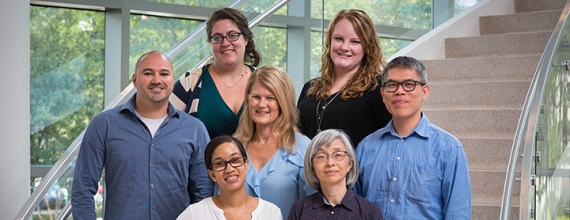The Functional and Cognitive Neurophysiology laboratory, led by Dr. Sameer Sheth, focuses on the study of human decision-making and cognition, as well as on the development of novel therapies for neuropsychiatric disorders. To accomplish these goals, we take a two-fold approach.
Our Labs
Research in our lab is focused on identifying the basic mechanisms of seizures that are unique to infants and young children. The catastrophic epilepsies of childhood often occur during circumscribed periods of brain development; with maturation these seizure disorders can be transformed to other types of epilepsy that are often unresponsive to anticonvulsant medications. Children with these disorders are often cognitively impaired. We have developed an animal model of infantile spasms, one of these catastrophic epilepsies.
The Anderson lab studies the molecular mechanisms by which signaling pathways modulate neuronal excitability in the immature hippocampus. The lab is also investigating how and why seizures induce long-term changes in ion channel plasticity (acquired channelopathies) and has developed several animal models of cortical dysplasia, autism and epilepsy. Additional studies are focused on cardiac mechanisms underlying sudden death in epilepsy. In addition to her research activities, Dr. Anderson leads the NRI EEG core and practices pediatric epilepsy at Texas Children's Hospital.
In the mammalian brain, synaptic connections organize the vast number of neurons into intricate neural circuits that give rise to the senses, cognitions, and actions. To understand how the brain performs its remarkable functions, it is essential to discover how the synapses orchestrate the spatiotemporal patterns of neuronal activities. Furthermore, synaptic dysfunction is being increasingly recognized as a critical underlying etiology of many neurological disorders, such as epilepsy and autism.
Each moment our senses are bombarded with information from many sources. How do networks of neurons in the brain rapidly process this information in order to make sense out of the world and choose appropriate actions? The McGinley lab approaches this question by studying neural mechanisms of auditory perceptual decision making behaviors, in mice. We primarily use whole-cell recording and two-photon imaging in head-fixed mice while they perform auditory perceptual decision-making tasks.
Dissecting cortical microcircuit in health and disease; connectopathies in epilepsy and autism spectrum disorders
Each brain region is composed of distinct neuronal cell types with characteristic morphological, electrophysiological, and molecular properties, and these cell types are wired in a specific manner to form a functional circuit. A mechanistic understanding of the workings of the normal and pathological brain requires identifying all of the constituent cell types, mapping their interconnections, and determining their functions.
Neurodevelopmental disorders encompass a broad constellation of conditions including intellectual disability, epilepsy, autism, schizophrenia, and other neuropsychiatric conditions. One emerging theme in the field is that disrupted inhibitory neuronal development and function is found in association with many neurologic and psychiatric disorders. This would be consistent with the growing body of knowledge that inhibitory neurons are highly diverse and key for virtually all aspects of neurobiology from neural circuit development to modulating neuronal activity to information processing.








